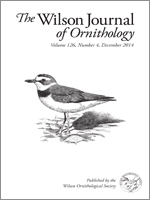Populations of Red-headed Woodpeckers (Melanerpes erythrocephalus) have declined throughout much of their range. Conservation management to arrest declines or increase populations is difficult, because many aspects of the species' demography remain poorly understood. To address this knowledge gap, we monitored Red-headed Woodpeckers' nests on Fort Drum Military Installation, in northern New York and modeled daily nest survival rate as a function of temporal and habitat-specific covariates. Red-headed Woodpeckers had low overall nest survival rates (nest survival = 32%), and predation was the leading cause (82%) of nest failure. Cavity concealment had the greatest influence on daily nest survival rate, whereby nests with greater vegetative structure surrounding (within 1 m2 of) the nest cavity had higher survival rates, likely because of reduced nest predation. Our estimates of Red-headed Woodpeckers' nest survival were lower relative to other portions of their range and suggest that, at local scales, low reproductive rates near the periphery of the species' distribution may limit population growth.
How to translate text using browser tools
1 December 2014
Survival of Red-headed Woodpeckers' (Melanerpes erythrocephalus) nests in northern New York
Jacob L. Berl,
John W. Edwards,
Jeffrey S. Bolsinger,
Todd E. Katzner
ACCESS THE FULL ARTICLE
cavity concealment
Melanerpes erythrocephalus
nest habitat
nest survival
New York
Red-headed Woodpecker





